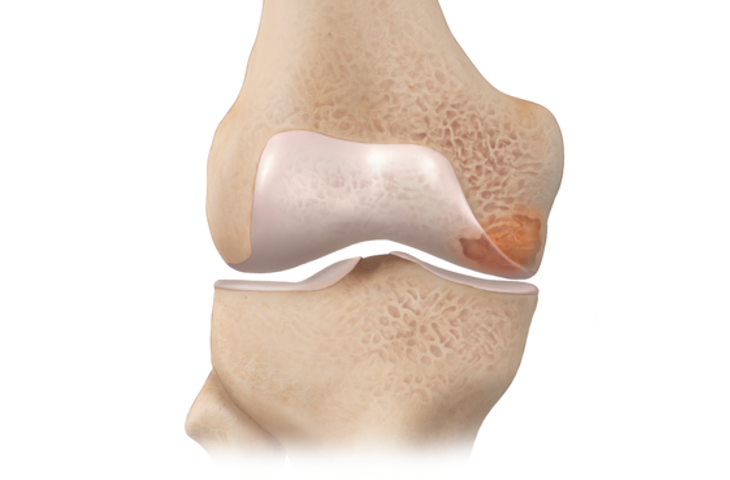Intraosseus Bioplasty (IOBP)
Intraosseous Bioplasty is a minimally invasive procedure that addresses bone marrow lesion. Chronic swelling of the bone underneath cartilage is painful and can be a sign of chronic overload. It can also be a sign of lack of oxygen to the bone called avascular necrosis. Traditionally, these lesions are treated with core decompression in which a tract or hole is created by a drill in order to decompress the area and stimulate healing. The introduction of biologic material such as stem cells, PRP, or bone matrix is called Bioplasty. Intraosseus Bioplasty is a technique using biologics to decompress an injured bony area and introduce biologic material to accelerate and promote healing.

Featured In Arthroscopy Techniques
Dr. Chen's surgical technique for intraosseous bioplasty of the tibial plateau has been featured in Arthroscopy Techniques - The Journal of Arthroscopic and Related Surgery.
Intraosseous Bioplasty for a Chondral Cyst in the Lateral Tibial Plateau
Common Questions About Intraosseous Bioplasty
Who needs an Intraosseous Bioplasty?
Individuals who have bone marrow lesions such as chronic bone marrow swelling or avascular necrosis are candidates for an Intraosseous Bioplasty.
How is an Intraosseous Bioplasty performed?
An Intraosseous Bioplasty is performed by first drilling a small hole in the injured area in order to reduce pressure. Following this procedure, which is known as a core decompression, certain biological materials such as bone marrow concentrate, which has a high concentration of mesenchymal stem cells, or PRP, which has a high concentration of growth factors, is added to the site to promote healing.
What is the difference between an Intraosseous Bioplasty and a core decompression?
A core decompression is the procedure that relieves pressure by drilling a small hole into the site of injury. A Bioplasty utilizes a core decompression but adds stem cells, PRP, or bone matrix in order to stimulate healing.










